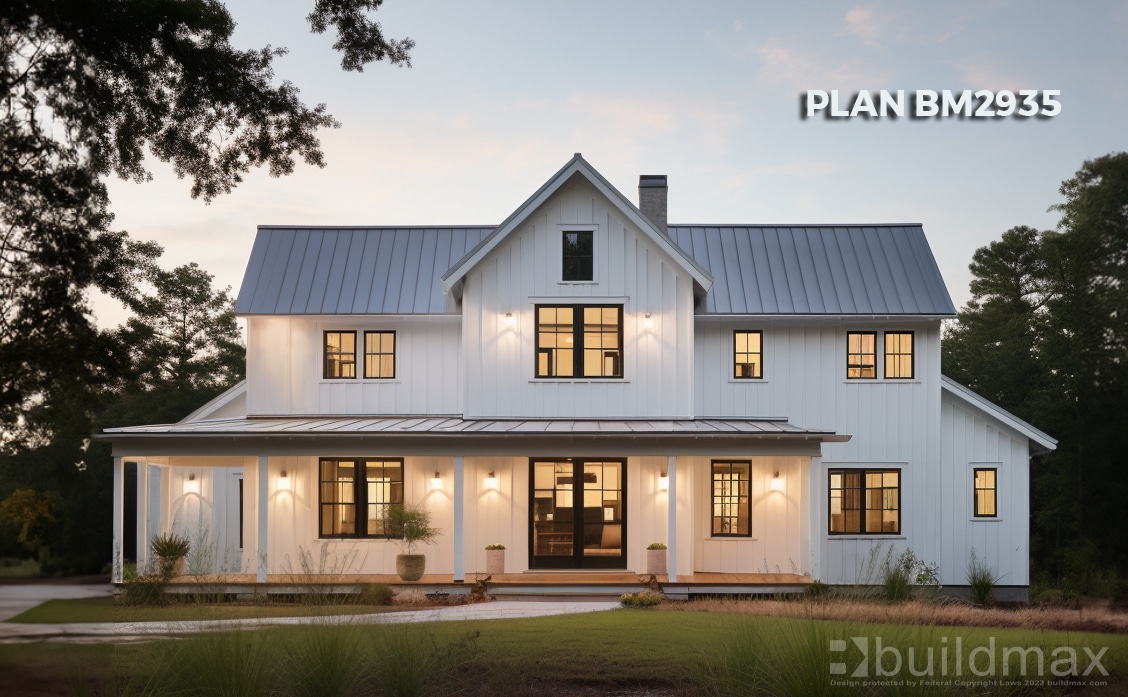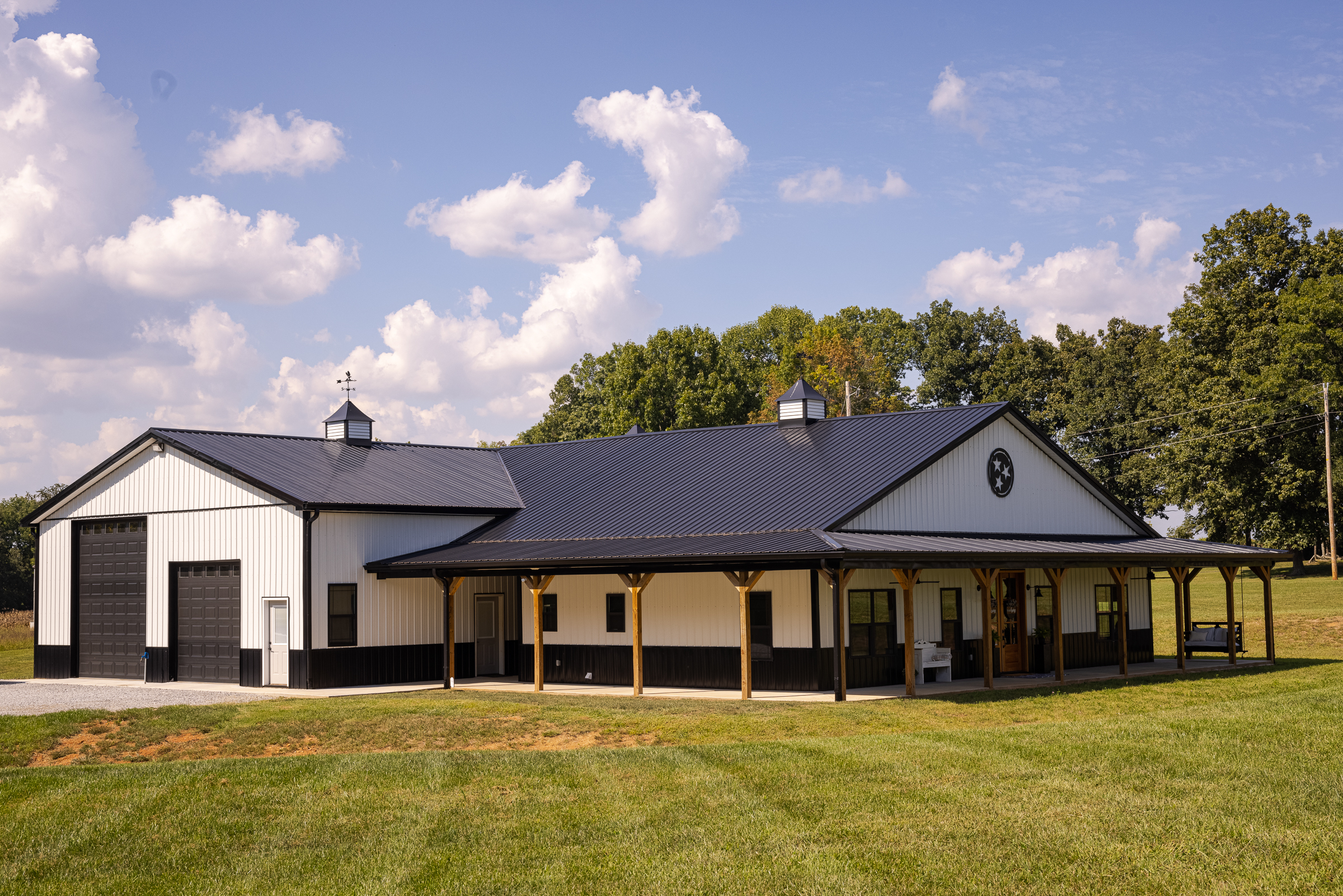Barndominium Repair Solutions: Top Quality Upkeep and Remediation
Barndominium Repair Solutions: Top Quality Upkeep and Remediation
Blog Article
Barndominiums Vs. Traditional Houses: a Detailed Comparison of Way Of Living and Functionality
The decision in between barndominiums and standard homes incorporates various aspects, consisting of lifestyle preferences and useful requirements. Barndominiums are defined by their open designs and versatility, frequently attracting those that focus on communal living and flexibility. On the other hand, typical homes offer a more structured atmosphere, which might much better offer families seeking privacy and a sense of history. As we take a look at the expense effects and environmental factors to consider, it comes to be clear that the selection expands past plain aesthetic appeals and capability; it invites a deeper exploration of what genuinely specifies a home.
Introduction of Barndominiums
Barndominiums, an unique housing pattern gaining popularity throughout various regions, mix the rustic charm of barn-style design with the functionality of modern-day home. These special structures usually are composed of a metal or wood structure, incorporating open layout and high ceilings with energy-efficient features. Commonly positioned on expansive rural residential or commercial properties, barndominiums use homeowners the opportunity to take pleasure in a calm lifestyle while offering adequate room for various activities.
The adaptability of barndominiums extends beyond their aesthetic charm; they can offer as both living quarters and functional areas for pastimes, workshops, and even tiny organizations. Their flexible layout permits easy customization, accommodating diverse household requirements and preferences. Numerous owners appreciate the low upkeep needs linked with steel house siding and roof covering, adding to lasting resilience.

Attributes of Traditional Houses
Highlighting classic design and comfort, standard homes are characterized by their distinct building designs, which often show historic impacts and local aesthetic appeals. Typical attributes consist of symmetrical facades, gabled roofing systems, and a focus on workmanship, resulting in a warm and welcoming environment.
Standard homes frequently integrate aspects such as crown molding, wainscoting, and wood floor covering, improving their traditional allure. They commonly feature several spaces with defined purposes, promoting family interaction while enabling privacy. view now. The layout typically includes formal living and dining locations, which contribute to enjoyable visitors and holding household events
Exterior materials such as block, timber, or rock are often used, adding to resilience and a sense of durability. Barndominium repair. Furthermore, numerous conventional homes are designed with front verandas or stoops, cultivating a sense of community and link with the community
Landscaping plays a substantial duty in conventional home design, with properly maintained yards and pathways that boost visual appeal - view now. In general, typical homes symbolize a sense of fond memories and stability, appealing to those that value heritage and a more organized living atmosphere
Price Comparison
Typically, an expense comparison between barndominiums and typical homes reveals significant distinctions in building expenditures and general investment. Barndominiums, often constructed from steel or steel frameworks, generally sustain reduced material and labor prices than traditional homes developed from timber and brick. The streamlined layout of barndominiums can equate to lowered building times, better decreasing labor expenses and quickening occupancy.
Usually, the price per square foot for a barndominium varies from $100 to $150, while conventional homes can differ extensively, generally dropping in between $150 and $300 per square foot, depending on place, products, and layout intricacy. This cost variation makes barndominiums an appealing alternative for budget-conscious customers seeking larger living areas without compromising top quality.
Additionally, barndominiums might lead to long-lasting cost savings with reduced upkeep prices, power performance, and insurance prices. Their durable construction materials typically need less upkeep gradually compared to standard homes. Nevertheless, it is vital to take into consideration that while first prices might be lower for barndominiums, the final investment will likewise rely on individual customization and preferred features, which can influence the overall expenditure in both real estate types.
Way Of Living and Area Factors To Consider
When taking into consideration way of life and space, barndominiums supply an one-of-a-kind versatility that attract a selection of property owners. These hybrid structures integrate residential coping with practical room, commonly including open layout that can be adapted to match private demands. This versatility is specifically helpful for family members or individuals looking for an individualized living environment, permitting varied uses such as home workplaces, workshops, or leisure locations.

Additionally, the aesthetic appeal of barndominiums can provide to both rustic and modern preferences, making them a functional choice for various design preferences (Barndominium builder). Ultimately, the choice in between a barndominium and a typical home commonly pivots on exactly how well each option straightens with the home owner's way of life goals and spatial requirements, highlighting the relevance of thinking about personal top priorities in the decision-making process
Environmental Influence and Sustainability
The environmental influence and sustainability of barndominiums existing compelling benefits compared to typical homes. Mostly constructed from steel and various other resilient products, barndominiums are commonly built making use of recycled resources, lowering the demand for brand-new materials and decreasing waste. Their style commonly highlights open rooms, which can he has a good point cause reduced energy intake for cooling and heating compared to standard homes with more segmented designs.
Moreover, barndominiums can integrate lasting features such as solar panels, rain harvesting systems, and advanced insulation methods, boosting their energy effectiveness. The convenience of their design enables home owners to integrate these innovations a lot more seamlessly than in numerous standard homes, which might require comprehensive retrofitting.
In addition, barndominiums often require fewer resources for building and construction as a result of their simpler, much more reliable layouts. This not only reduces the carbon footprint connected with building yet also contributes to a much more sustainable way of life. In comparison, standard homes might include greater degrees of power expense and source make use of throughout their lifecycle, from building and construction to upkeep. On the whole, barndominiums stand for a forward-thinking strategy to lasting living, straightening with modern ecological concerns.
Conclusion
In recap, the selection between barndominiums and conventional homes rests on specific way of life preferences and useful needs. Barndominiums, with their open designs and lasting products, deal with those looking for versatility and communal living. Alternatively, standard homes provide specified areas that enhance personal privacy and support historic looks. Each choice presents special advantages, demanding careful factor to consider of one's values and requires when identifying one of the most suitable living setting.
Report this page